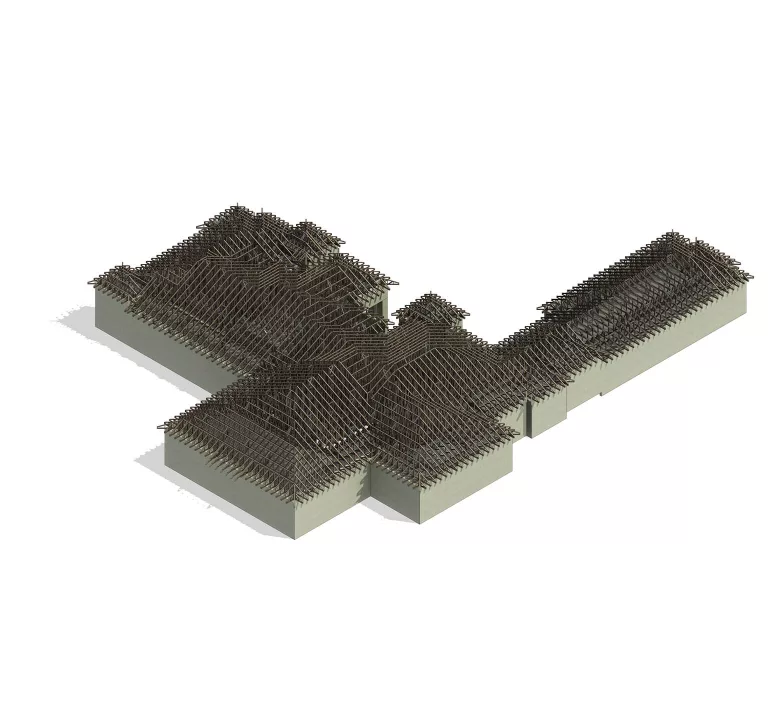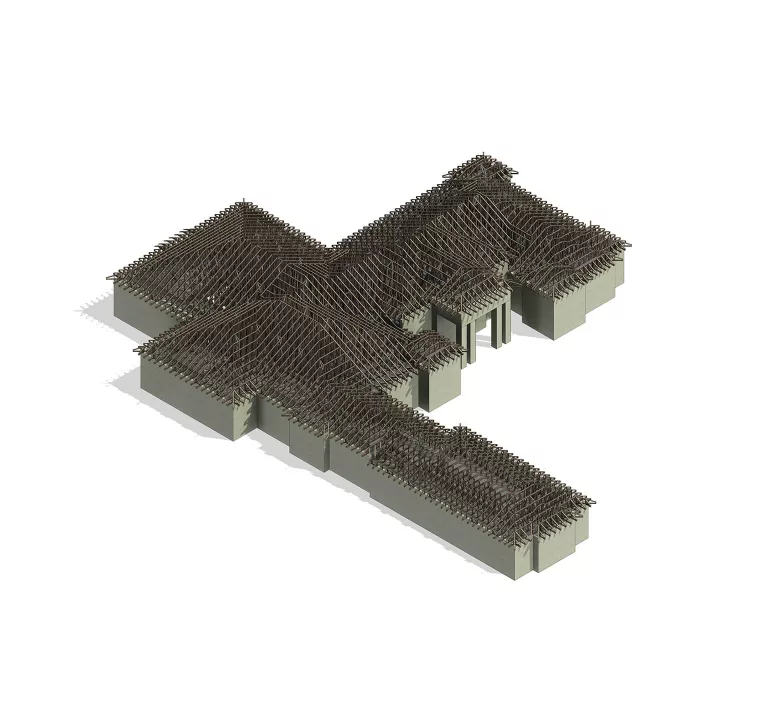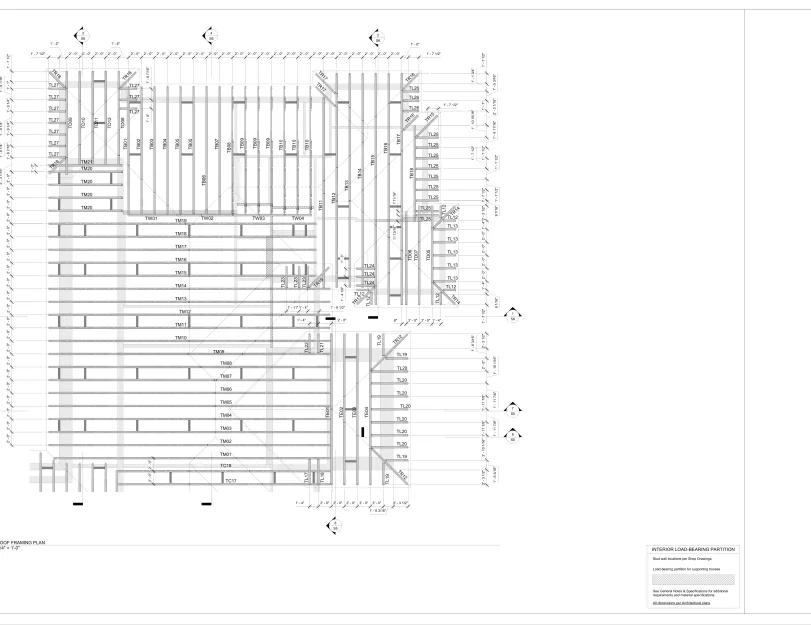This project required the ORIGIN team to design LGS roof framing for a single-family residential building, with the condition that the truss design be suitable for further fabrication using a FRAMECAD rollformer. This would ensure a streamlined fabrication process and enhanced construction efficiency.
Input: Structural drawings set.
Project deliverables:
- Roof trusses layout;
- Truss reports;
- FRAMECAD CNC files for LGS panels production.

































